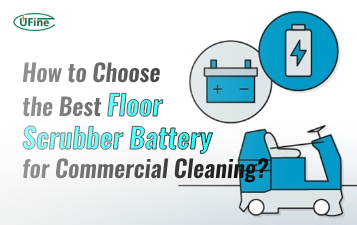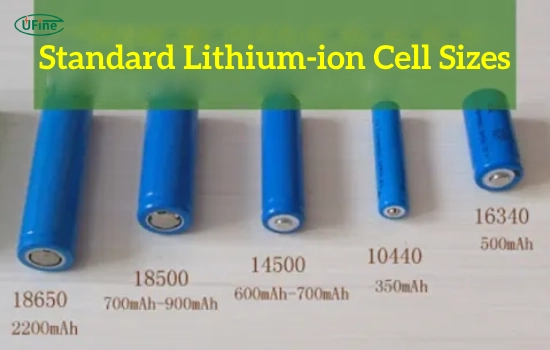Lithium-ion cell sizes play a crucial role in the performance and application of batteries in various devices. As technology continues to evolve, understanding the different sizes of lithium-ion cells is essential for manufacturers, engineers, and consumers alike. This comprehensive guide will explore the various lithium-ion cell sizes, their applications, and critical considerations for selecting the correct battery.
Part 1. What are lithium-ion cells?
Lithium-ion cells are rechargeable batteries that utilize lithium ions as the primary component in their electrochemical reactions. They are renowned for their high energy density, low self-discharge rate, and ability to be recharged multiple times without significant degradation. These cells are available in various shapes and sizes. Their versatility makes them suitable for numerous applications, from consumer electronics to electric vehicles.
Key Characteristics of Lithium-Ion Cells
- High Energy Density: Lithium-ion cells can store much energy relative to size and weight.
- Low Self-Discharge Rate: They maintain their charge for extended periods, making them ideal for devices that people use infrequently.
- Long Cycle Life: With proper care, lithium-ion batteries can last several years, providing reliable power.
- Environmental Impact: Lithium-ion cells are generally more environmentally friendly than lead-acid batteries, mainly when appropriately recycled.
Part 2. Standard lithium-ion cell sizes
Understanding standard lithium-ion cell sizes is essential for selecting the correct battery for specific applications. Here are some standard sizes and their dimensions:
Common Sizes and Dimensions
| Battery Type | Dimensions (mm) | Capacity (mAh) | Common Uses | |
|---|---|---|---|---|
| 10440 | 10 x 44 | 250 – 350 | Mini electronics, flashlights | |
| 14500 | 14 x 50 | 700 – 1200 | LED flashlights, digital cameras | |
| 16340 | 16 x 34 | 400 – 900 | Laser lights, security cameras | |
| 18650 | 18 x 65 | 1500 – 4000 | Laptops, electric vehicles | |
| 21700 | 21 x 70 | 3000 – 6000 | E-bikes, power tools | |
| 26650 | 26 x 65 | 2400 – 6000 | High-powered flashlights, drones | |
Industry Standards for Cell Sizes
Different industries have established standards for lithium-ion cell sizes to ensure compatibility and performance. For instance, the 18650 size has become a de facto standard in the electric vehicle industry due to its high energy density and reliability. Similarly, 21700 cells are gaining popularity for their increased capacity and efficiency, particularly in newer electric vehicle models.
Why Is It Important to Follow Industry Standard Battery Sizes?
1. Improved Production Efficiency
Standard battery sizes help manufacturers streamline their production. Companies can reduce equipment costs and maintenance by focusing on specific battery models. This efficiency lowers production costs and boosts competitiveness.
2. Reduced Design and Development Costs
With standard sizes, manufacturers can use multiple production lines. This adds complexity and costs. Standardizing sizes helps reduce design changes and development costs.
3. Enhanced Compatibility
Standard battery sizes make it easier to fit batteries into devices. This reduces compatibility issues and simplifies battery replacement or upgrades for consumers.
4. Ensured Product Quality
Different sizes require different production processes and quality checks. Standardizing sizes helps maintain consistent quality and reliability and reduces quality fluctuations.
5. Industry Growth
With the rise of electric vehicles and renewable energy, battery demand is growing. Standardizing sizes supports industry growth and allows innovators to focus on new developments.
6. Easier Battery Recycling
Uniform battery sizes make recycling simpler. This helps improve recovery rates and reduces environmental impact, supporting sustainable development goals.
Part 3. Types of lithium-ion cells
Lithium-ion cells can be divided into several types based on their shape and construction. Each type has advantages and disadvantages, making it suitable for different applications.
Cylindrical Cells
Cylindrical cells are the most widely used type of lithium-ion battery. They are typically encased in a metal cylinder and are known for their robustness and high energy density.
Standard Sizes: 18650, 21700, 26650
Applications: Laptops, power tools, electric vehicles, and flashlights.
Advantages:
- High energy density.
- Robust construction.
Disadvantages:
Less efficient use of space in battery packs compared to prismatic cells.
Prismatic Cells
Prismatic cells are rectangular, allowing for better space utilization in battery packs. They are often used in applications where space is at a premium.
Standard Sizes: 103450, 18650 (in prismatic form)
Applications: Smartphones, tablets, and electric vehicles.
Advantages:
- Better space efficiency.
- It is easier to integrate into compact designs.
Disadvantages:
Generally lower energy density compared to cylindrical cells.
Pouch Cells
Pouch cells are flexible and lightweight, encased in a soft, foil-like material. They can be manufactured in various shapes and sizes, making them versatile for different applications.
Standard Sizes: Custom sizes based on application needs.
Applications: Wearable devices, smartphones, and drones.
Advantages:
- Lightweight and flexible.
- Customizable shapes and sizes.
Disadvantages:
Less durable than cylindrical or prismatic cells.
Button Cells
Button or coin cells are small, round batteries typically used in low-power devices.
Standard Sizes: CR2032, CR2025
Applications: Watches, remote controls, and small electronic devices.
Advantages:
- Compact and lightweight.
- Cost-effective for low-power applications.
Disadvantages:
Limited capacity and power output.
Cylindrical VS Prismatic VS Pouch Cells
Part 4. Why do different battery specifications require different manufacturing processes?
1. Variations in Size and Shape
Batteries come in many shapes and sizes, like cylindrical or pouch types. Each design needs specific equipment and processes. For example, cylindrical batteries use winding techniques, while pouch batteries are stacked.
2. Different Capacity and Energy Density Requirements
Batteries have different needs in terms of capacity and energy. Larger-capacity batteries need precise manufacturing techniques to maximize energy density.
3. Diverse Materials and Chemical Systems
Batteries use different materials and chemicals. For instance, lithium iron phosphate batteries need different processes than lithium cobalt oxide batteries.
4. Application-Specific Needs
Different uses require different battery features. For example, electric vehicle batteries need high safety and consistency, while consumer batteries focus on energy density and cost.
5. Variations in Manufacturing Equipment and Technology
Manufacturers use different equipment. Advanced equipment makes high-performance batteries but costs more. More straightforward equipment helps smaller companies manage expenses.
Part 5. How to choose the right lithium-ion cell size?
When selecting a lithium-ion cell, consider the following factors:
- Application Requirements: Determine the energy needs of your device. Higher-capacity cells are better for devices requiring more power.
- Size Constraints: Ensure the cell fits within the physical dimensions of your device.
- Weight Considerations: For portable devices, lighter batteries are preferable.
- Cost: Different cell types and sizes come at various prices, so budget accordingly.
Part 6. FAQs
-
What is the most common lithium-ion cell size?
The 18650 cell is one of the most common lithium-ion cell sizes, widely used in laptops and electric vehicles. -
How do I know which lithium-ion cell to choose?
Consider your device’s energy requirements, size constraints, and weight to select the appropriate lithium-ion cell. -
Can lithium-ion cells be recycled?
You can recycle lithium-ion cells, and many programs are developing to recover valuable materials from used batteries. -
What are the safety concerns with lithium-ion batteries?
If not handled properly, lithium-ion batteries can pose safety risks, including overheating and fire hazards. It’s essential to use quality chargers and avoid overcharging. -
How long do lithium-ion batteries last?
Lithium-ion batteries can last 3 to 5 years or more with proper care, depending on usage and charging habits.
Related Tags:
More Articles

How to Choose the Best Floor Scrubber Battery for Commercial Cleaning?
Selecting the ideal floor scrubber battery ensures a long runtime, rapid charging, and minimal maintenance for efficient commercial cleaning operations.
Battery for Blower vs Battery for Leaf Vacuum: Which One Should You Choose?
Battery for blower vs leaf vacuum—learn the key differences in power, fit, and runtime to choose the right battery for your outdoor tool needs.
How to Choose the Right Battery for Blower?
Choosing the right blower battery? Consider voltage, capacity, chemistry & usage. This guide helps match the best battery for peak performance.
How to Choose the Best Insulated Battery Box for Lithium Batteries?
Choosing the Best Insulated Battery Box for Lithium Batteries? Discover key factors such as size, material, and safety for optimal protection and performance.
7 Critical Elements on a Lithium Battery Shipping Label
What must be on a lithium battery shipping label? Learn 7 key elements to ensure safety, legal compliance, and correct handling across all transport modes.





